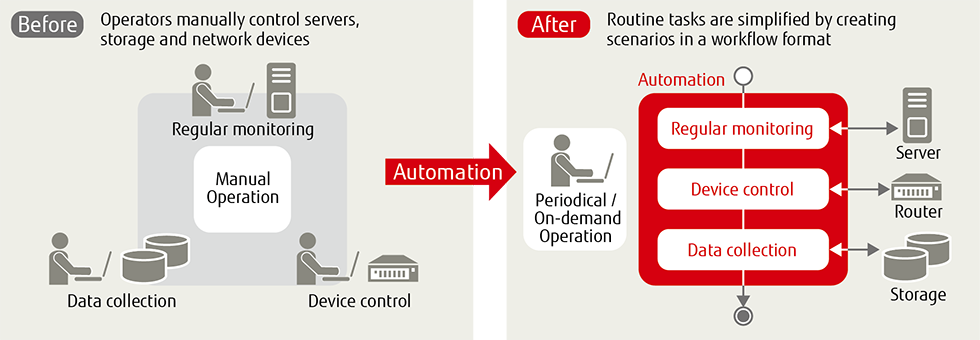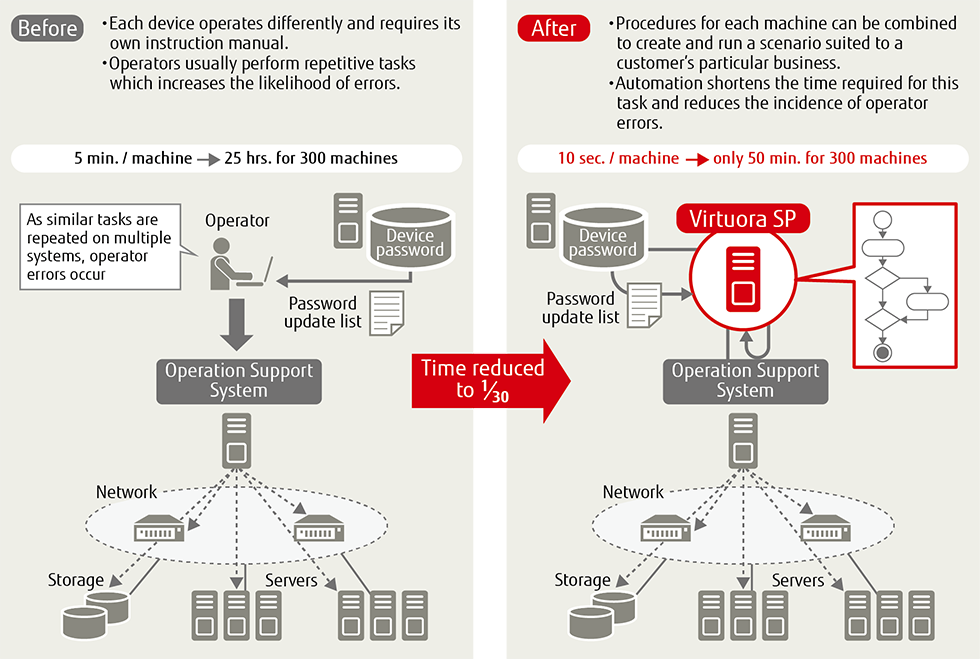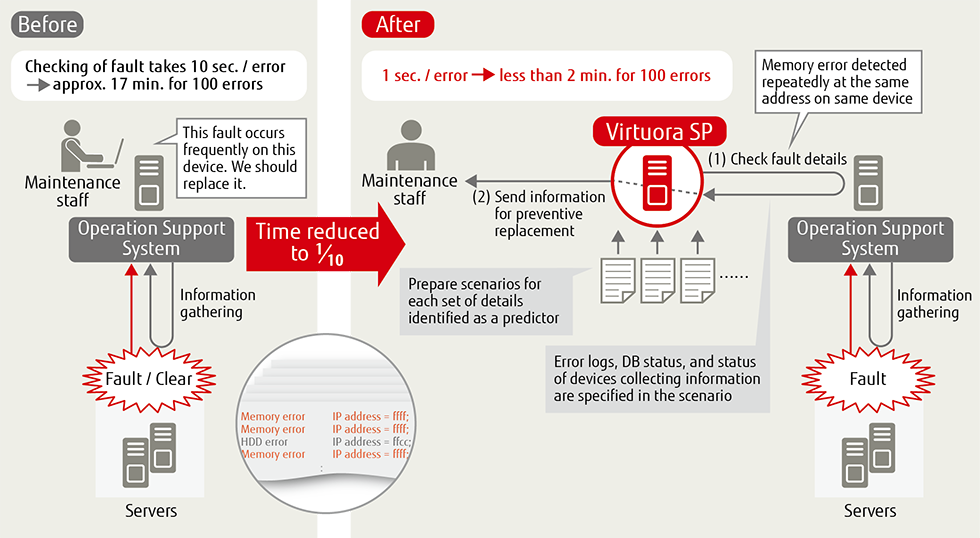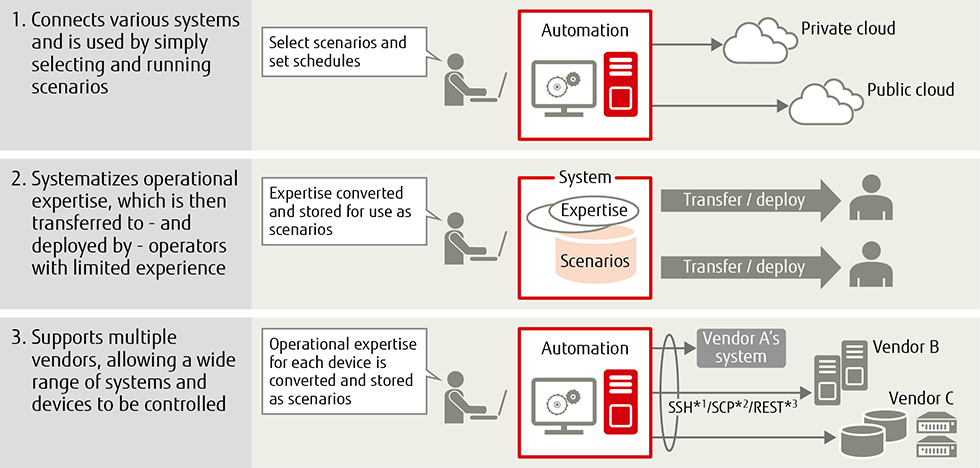Archived content
NOTE: this is an archived page and the content is likely to be out of date.
FUJITSU Network Virtuora SP
Automating customers' operations and maintenance tasks
Virtuora SP automates the operation and maintenance (O&M) of servers, storage and networks by using software to apply acquired knowledge of those tasks in specific scenarios. This allows much faster provision of services to customers and significantly reduces operational costs.
By automating tasks that are normally performed manually, such as collecting device logs and managing device activity and resources, Virtuora SP also improves the quality of O&M tasks.
Example 1: Automation of regular password changes
Time-consuming tasks that are prone to input and configuration errors can be made more efficient through software-based automation. For example, the task of regularly changing passwords, previously performed manually by an operator, can be automated using Virtuora SP.
Example 2: Automated detection of critical fault predictors
Intermittent faults in servers, storage and networks may be predictors of more serious faults in the future. Various tasks performed by operators can be automated in Virtuora SP, such as the checking of fault locations and frequencies. In addition, decisions can be made more rapidly on preventive replacement of devices by regularly running scenarios to check on the location and frequency of faults, based on information extracted from fault history data. Alerts are issued to assist with decision making.
Features of FUJITSU Network Virtuora SP
*1 SSH (Secure SHell): Protocol used to communicate securely with remote computers
*2 SCP (Secure CoPy): Secure file transfer protocol that uses SSH functionality
*3 REST (REpresentational State Transfer): A set of principles, properties, and constraints that describe a style of software architecture used for networked resources.
Summary of Requirements
Server
| Hardware | CPU | Intel® Xeon® E3-1220 v3, 3.1 GHz or faster processor |
|---|---|---|
| Memory | 4 GB or higher | |
| Disk | 320 GB or higher | |
| Ethernet Card | 1000BASE-T | |
| Software | OS | Red Hat Enterprise Linux 6.5 (64-bit edition) |
Scenario creation terminal
| Hardware | CPU | Intel® Core i5 M560 (2.66GHz) or faster processor |
|---|---|---|
| Memory | 4 GB or higher | |
| Disk | 10 GB or higher | |
| Software | OS | Microsoft Windows 7 |
- Intel, Xeon and Intel Core are trademarks of Intel Corporation registered in the United States and other countries.
- Ethernet is a registered trademark of Fuji Xerox Co., Ltd
- Linux is a trademark or registered trademark of Linus Torvalds in Japan and other countries.
- Red Hat and all trademarks and logos based on Red Hat are trademarks or registered trademarks of Red Hat, Inc. in the United States and other countries.
- Microsoft, Windows and all other Microsoft product titles or names are trademarks or registered trademarks of the US Microsoft Corporation in the United States and other countries.
- All company names and product names in this site are trademarks or registered trademarks of their respective owners.
- Note that the ™ and ® trademark symbols may not be used in some cases for system or product names used in this site.
- The information here is subject to change without notice.
Documentation
- FUJITSU Network Virtuora SP (244 KB)



